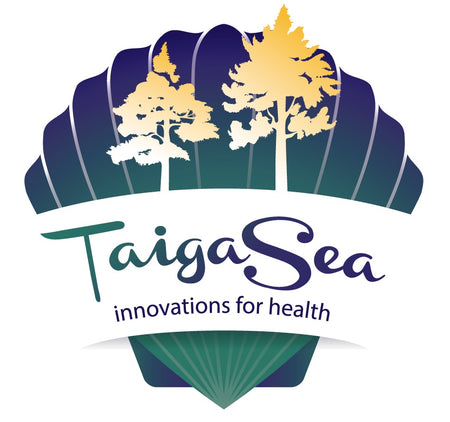Eleutherococcus
Eleutherococcus senticosus or Siberian Ginseng has been used in China for 2000 years as a folk remedy for bronchitis, heart ailments, and rheumatism, and as a tonic to restore vigor, improve general health, restore memory, promote healthy appetite, and increase stamina. Referred to as “ci wu ju” in Chinese medicine, it was used for stimulation of immunity, for prevention of the respiratory tract infections such as colds and flu. It was also believed to provide energy and vitality. In Russia, eleuthero was originally used by people in the Taiga region of Siberia to increase performance and quality of life and to decrease infections.
In Russian folk medicine Eleutherococcus was not recorded to be in use until 1976. Then it was found out that more than three millions Russian people regularly take extract of Eleutherococcus. A little later, Eleutherococcus was used by Russian athletes to prepare for the Olympic Games. In the late 1970s and early 1980s it was including in the space training program.
Eleutherococcus senticosus is a perennial bush with highly developed branching root system that can reach from 2 to 5 m in height. Eleutherococcus grows in the Far Eastern areas of Russia as well as in north-eastern China, and northern Korea. This herb does not look like ginseng but due to its vital effects it is widely known Siberian ginseng. Eleutherococcus in Russia is a wild grown plant and it exerts pronounced adaptogen activity in humans.
Active components of eleutherococcus are triterpenoid saponins* and lignans** generally termed eleutherosides. Because to their structural diversity they exert various effects on human organs and systems. The highest concentration of eleutherosides is found in roots.
* Some of 43 saponins of Eleutherococcus senticosus: ciwujianosides A1, A2, A3, A4, B, C1, C2, C3, C4, D1, D2, D3, E:l; acanthopanaxosides A, B, C; sessiloside, tauroside, chiisanoside, hederasaponin B, silphiosides G, F; ilexoside XLVIII, hemsgiganoside B, anhuienside C, friedelin, saponin PE.
** Some of 17 lignans of Eleutherococcus senticosus: neociwujiaphenol, ciwujiatone, sesamin, eleutherosides B, E, E2; coniferyl aldehyde, syringaresinol, medioresinol.
Root extract of eleutherococcus contains more than 100 active compounds, each of which can affect some of the human body systems. Thus, the mechanism of the effects exerted by eleutherococcus is not still clear. But there is some strong experimental evidence that eleutherococcus extract have the following influence on humans:
- Stimulation of immunity enhancing resistance to infectious agents;
- Neuroprotective activity by inhibition of inflammation and microglial activity;
- Glucose-lowering activity through enhanced glucose utilization;
- Anti-fatigue effects due to increased dopamine and noradrenalin levels in brain;
- Antioxidant activity reducing NO concentration and inhibiting lipid peroxidation reactions;
- Cognition improvement through promotion of the neurite outgrowth;
- Reduction of the stress symptoms protecting central nervous system and heart;
- Hepatoprotective effects exerted by the water-soluble polysaccharides;
- Eleuthero has once been noted to improve social functioning and some markers of cognitive decline in elderly persons.
Eleutherococcus senticosus is a classic adaptogen described by Russian researcher I.Brekhman in 1966. From this point the taiga herbs became considered as a pharmacologically active agents improving various functions in human body.
References:
Huang L.Z., Zhao H.F., Huang B.K. et al. Acanthopanax senticosus: review of botany, chemistry and pharmacology. Pharmazie. 2011, Vol. 66. P. 83-97.
Davydov M., Krikorian A.D. Eleutherococcus senticosus (Rupr. & Maxim.) Maxim. (Araliaceae) as an adaptogen: a closer look. J. Ethnopharmacol. 2000 Vol.72(3). P. 345-393.
Yamazaki M., Hirota K., Chiba K., Mohri T. Promotion of Neuronal Differentiation of PC12h Cells by Natural Lignans and Iridoids. Biol. Pharm. Bull. 1994. Vol. 17(12). P. 1604-1608.
Tohda C., Ichimura M., Bai Y., et al. Inhibitory Effects of Eleutherococcus senticosus Extracts on Amyloid β(25-35)–Induced Neuritic Atrophy and Synaptic Loss. J. Pharmacol. Sci. 2008. Vol. 107(3). P. 329-339.
Wiegant F.A., Surinova S., Ytsma E., et al. Plant adaptogens increase lifespan and stress resistance in C. elegans. Biogerontology. 2009. Vol. 10(1). P. 27-42.
Eschbach L.F., Webster M.J., Boyd J.C., et al. The Effect of Siberian Ginseng (Eleutherococcus Senticosus) on Substrate Utilization and Performance during Prolonged Cycling. Int. J. Sport Nutr. Exerc. Metab. 2000 Vol. 10(4). P. 444-451.
